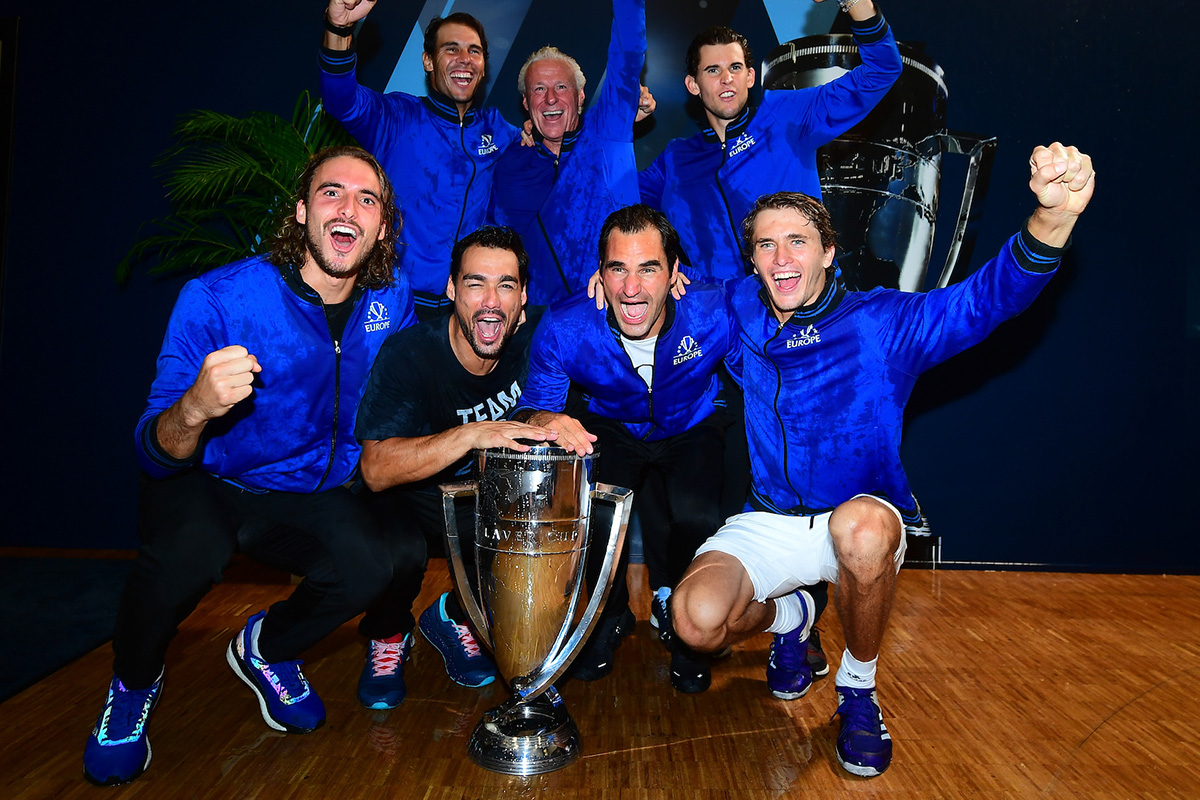Twelve matches spread over a three-day weekend later, Laver Cup has modified the proverbial face and scope of men’s tennis. It is still viewed sceptically as a disruptor to routine, individual-focused tennis matches in certain pockets. Yet, the singularity it has brought into the midst of the prevalent concept of individuality is irrevocable.
In the third year of the event’s emergence, these aspects are repetitive. However, Laver Cup’s display re-lit the theme of a team before a player. It also elevated it to heights not seen in its previous two editions. This showed in the players’ camaraderie with each other. As it did in the numerous coaching tips that came from the bench from Rafael Nadal, Roger Federer, and even Nick Kyrgios towards their fellow squad members.
Broadly, it was laid out in how the Laver Cup changed the subject from who would win the most Slams to which part of the globe would be victorious. For once, the conversation did not focus on 20 Slams versus 19, as it had come to be after Nadal’s win at the US Open. It was riveted on how two sportsmen with 39 Slams between them could set aside their competitiveness towards a common goal for a still-mushrooming tourney.
The aftermath.
Brought to you by @Moetchandon. #LaverCup | #TeamEurope pic.twitter.com/wb0HvLbKxV
— Laver Cup (@LaverCup) September 22, 2019
“Winning (as) teams is just amazing because you celebrate together. It’s a very special thing. Honestly, I really hope that this new and young generation keeps supporting this event because this event is special,” Nadal said after Team Europe’s three-peat on Sunday. “We need to make this event stronger and stronger because the atmosphere that we leave here is difficult to find in other places.”
The 33-year-old’s statements, aside from setting aside any cynicism about his involvement in the event this year, emphasised the growth Laver Cup has had in its three years. Nadal’s participation in Laver Cup’s inaugural year was seen as a novelty, a continuation of his and Federer’s triumphant return to the Tour after an injury-troubled 2016. Novak Djokovic’s inclusion in Europe’s 2018 squad was viewed as a reiteration that the event was a fad, where top-ranked players would make a one-off appearance, before stepping away.
In 2019, the 12-time French Open champion’s return contradicted this previously-held supposition. This shifting of perceptions is why Laver Cup has turned problematic to the Tour’s other mainstay events.
If Laver Cup were to be regarded as merely an exhibition, a tournament with no relevance to how the ATP tour progressed year-on-year with its usual clanking schedule, all of the players’ emotiveness and reactions would have been on par with the idea of livening it up for its sake.
https://twitter.com/rogerfederer/status/1176258686269952000
On the other hand, when two former world no. 1s were heard sternly telling their touted successor not to be negative for the rest of his match, it was hard to convince that the whole atmosphere was made-up.
Though, it does bear noting that not being put-on and the ease with which it has been assimilated in tennis’ mainstay have been the catalysts for Laver Cup’s disparaging mooting in certain circles.
The past weekend it coincided with a couple of ATP tournaments, in St. Petersburg and Metz. Both events had several interesting match-ups of their own. Followers deeply vested in the sport knew the happenings across all tournaments held last week. But for casual viewers, it would have come down to picking one event over the rest.
The factoring in of this unnecessary chasm added to the enervation around tennis by making one take sides in a sport that is already at crossroads, without Laver Cup even being mentioned.
Yet, if it were about inclusivity, selectivity in audiences’ preferences is the other side of tennis’ coin. These choices cannot always remain aligned, even in accepting or discarding the tri-day tournament as a consequential pursuit. As Nadal opined, when asked to compare between his other title wins and his Laver Cup team win, “…every single thing is different and is important by itself.”






